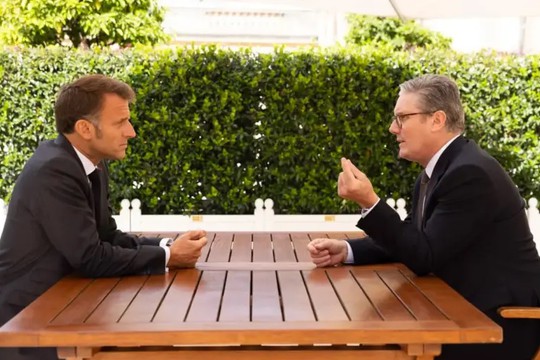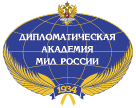Like two village boys, Macron and Starmer discuss their plans of a war with Russia at a plein air meeting...
Photo: Euractiv
The “coalition of the willing” led by the UK and France to help secure a possible ceasefire in Ukraine risks stalling after it failed to obtain any firm commitments from the White House on security guarantees, people familiar with the matter said, Bloomberg quotes.
The ministers of defense of the group have gathered at NATO on Thursday amid debates between London and Paris on whether a so-called reassurance force composed of the voluntary participants requires a US “backstop,” said the people who spoke on condition of anonymity. Countries are also yet to reach a decision on what form the force should take and under what structure.
European leaders are trying to carve out a role for themselves in US-led ceasefire talks over Russia’s war in Ukraine. The UK and France have been seeking to persuade Donald Trump to offer air power, border surveillance and intelligence rather than troops, but the US President has resisted making such commitments since the plan was floated two months ago.
UK Prime Minister Keir Starmer has been clear that such a force would only be viable with US security guarantees to effectively deter Russia from attacking Ukraine again. UK officials insist that remains an essential component of the coalition — a group of European Union, NATO and non-NATO allies that have agreed to support Kyiv as Trump administration scales back its support.
Defense ministers from Finland and the Netherlands told reporters on Thursday that the force still requires a US backstop. Kaja Kallas, the EU’s top diplomat, said that Europe is “trying to keep the US on board” with the coalition.
“Of course it is good if the US is very explicit about its support and backstop,” Dutch minister Ruben Brekelmans said at NATO’s headquarters in Brussels. “But it also really depends on the mission.”
About 15 countries have confirmed their willingness to contribute forces to the endeavor, according to people with knowledge of the proposals. NATO is not directly involved at this stage and Canada as well as Australia who isn’t a member are among countries that have offered forces to work alongside European troops, according to officials.
UK Defense Secretary John Healey said 200 military planners from 30 countries have been drawing up a “well-developed” plan for how the force would work in recent weeks, focused on securing safe skies and seas as well as supporting “peace on the land” focused on helping Ukraine’s own forces “become their own strongest possible deterrent.”
The troops would be deployed only after a peace deal comes into effect. Kallas told reporters that countries are debating whether it should be a deterrence, monitoring or peacekeeping force.
Europe’s security is in a period of flux, with allies urging the US to coordinate on any plans to reduce its military presence on the continent to avoid destabilizing NATO defenses, Bloomberg has previously reported.
European officials have accepted that Trump’s administration will almost certainly withdraw some of the roughly 80,000 US troops deployed in the continent, including in some of the eastern nations, according to people familiar with the matter. They said their focus is on mitigating the worst effect of such a shift.
read more in our Telegram-channel https://t.me/The_International_Affairs

 11:23 12.04.2025 •
11:23 12.04.2025 •























